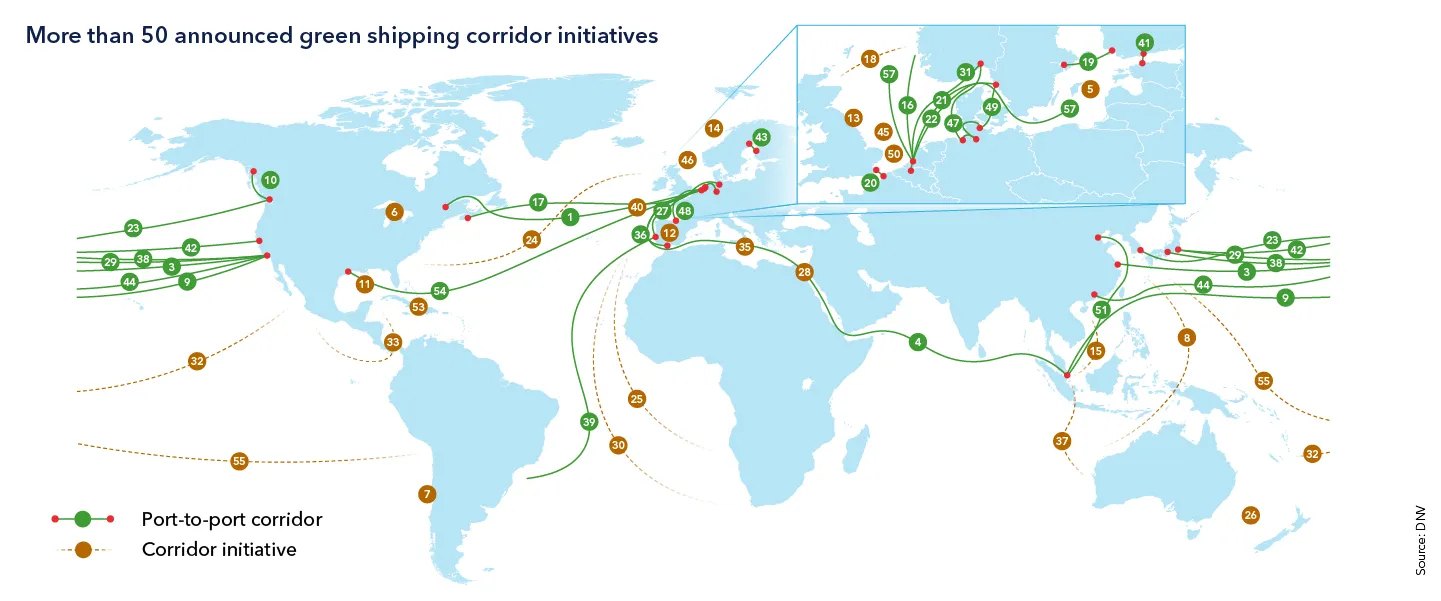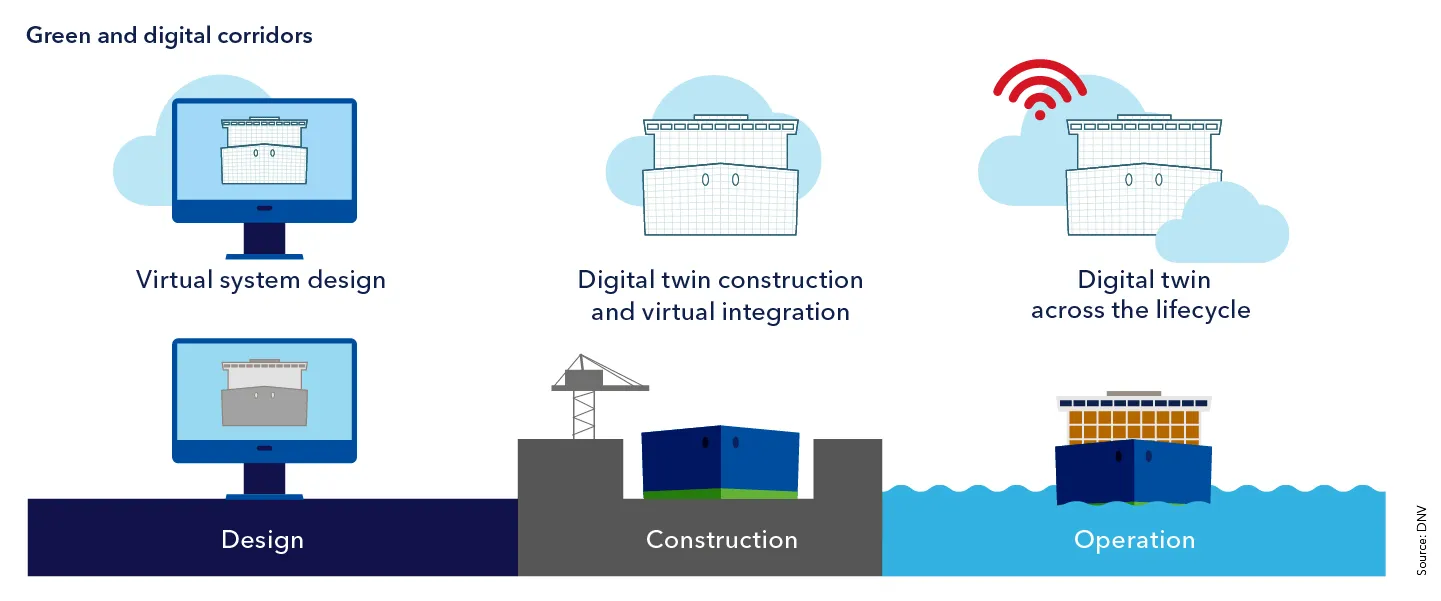According to DNV, last year saw a doubling in the count of initiatives promoting environmentally friendly shipping corridors, bringing the total to 57 as of February this year.
Los Angeles, Singapore, Antwerp, Rotterdam, the Baltic Sea, and southern Japan have emerged as the leaders in promoting specialized shipping routes for green fuels.
Green shipping corridors can fast-track the adoption of carbon-neutral fuels, which play a critical role in achieving the IMO’s zero emission targets by 2050. By focusing on specific routes and close collaboration among key stakeholders, these corridors can help resolve barriers to the uptake of new fuels and technologies on a manageable scale. Our slideshow outlines key factors for a successful corridor initiative.
As explained, a green shipping corridor is a shipping route on which zero-carbon emissions ships and other emissions reduction programmes are deployed, and emissions reductions are measured and enabled through public and private actions and policies. C40 is a global network of nearly 100 mayors working to confront the climate crisis.

Digitalization
According to DNV, digitalization will be a key enable for efficient and smart future corridors that could use digital-enabled optimization to unlock energy saving potentials. In a digital green shipping corridor or network, enhanced integration and communication among ships, shore offices and ports facilitate several critical benefits.

Moving from idea to realization
As explained, moving from idea to realization of corridors will take time and involves several phases and milestones. The start of the process and involvement of key stakeholders is crucial. The stakeholders should strive to reduce the risk of unnecessary delays, establish momentum and most importantly, identify cost gaps and cost-sharing mechanisms such as procurement policies, green financing, government incentives and regional supporting instruments to bridge the cost gap.




























































